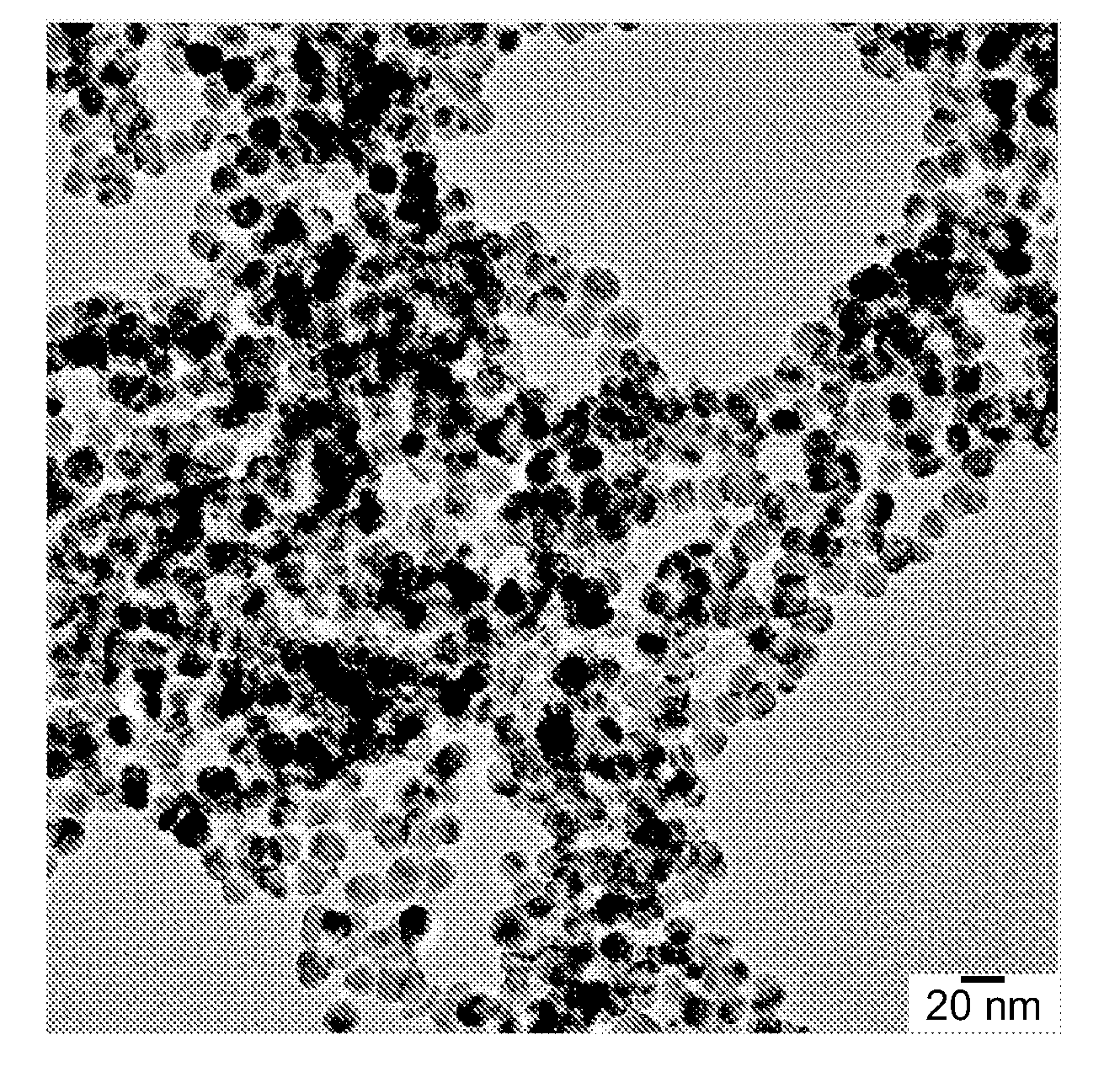Making films composed of semiconductor nanocrystals
a technology of nanocrystals and polycrystalline films, which is applied in the direction of luminescent compositions, electrical devices, chemistry apparatus and processes, etc., can solve the problems of insufficient device performance for market needs, relatively high cost, and limited efficiency, and achieves low aspect ratio, high crystallinity, and large size
- Summary
- Abstract
- Description
- Claims
- Application Information
AI Technical Summary
Benefits of technology
Problems solved by technology
Method used
Image
Examples
example 1
[0058]Polycrystalline films of nanocrystals having an aspect ratio less than 3:1 and a diameter greater than 10 nanometers were formed on glass substrates. The test system was CdSe. The cadmium precursor is cadmium acetate and the Se precursor is TOPSe. The coordinating solvent for the growth is a mixture of trioctylphosphine oxide (TOPO) hexadecylamine (HDA), and trioctylphosphine (TOP), which are degassed at 190° C., 100° C., and 190° C., respectively, for 60 minutes prior to their usage. In a small vial inside of a dry box, 0.23 g (1 mmol) of cadmium acetate is added to 3 ml TOP. After gently heating this mixture under constant spinning, the solution goes clear in 5-10 minutes. At the same time, a mixture of 6 ml of degassed TOPO and 3 ml of degassed HDA is placed in a three-neck flask and placed on a Schlenk line. At room temperature, the contents are subjected to three cycles of evacuation, and are then degassed at 100° C. for 30 minutes followed by argon refilling. Then 0.5 ml...
PUM
 Login to View More
Login to View More Abstract
Description
Claims
Application Information
 Login to View More
Login to View More - R&D
- Intellectual Property
- Life Sciences
- Materials
- Tech Scout
- Unparalleled Data Quality
- Higher Quality Content
- 60% Fewer Hallucinations
Browse by: Latest US Patents, China's latest patents, Technical Efficacy Thesaurus, Application Domain, Technology Topic, Popular Technical Reports.
© 2025 PatSnap. All rights reserved.Legal|Privacy policy|Modern Slavery Act Transparency Statement|Sitemap|About US| Contact US: help@patsnap.com



